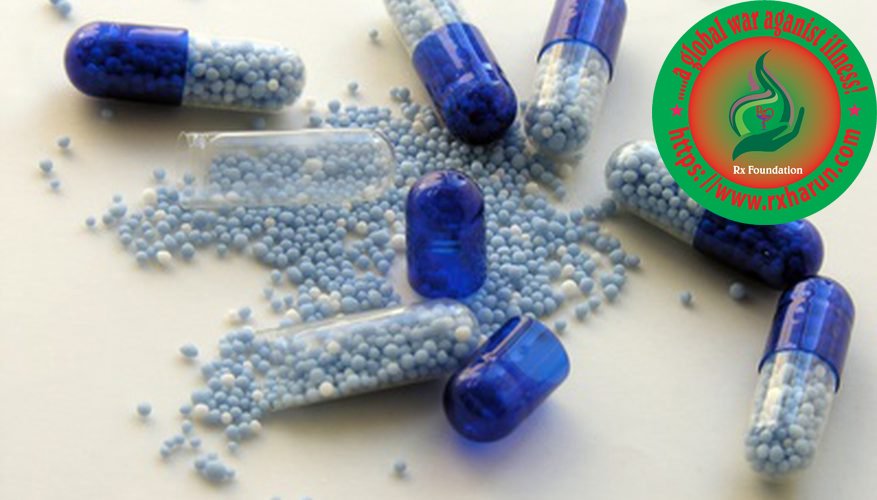Alogliptin is a selective, orally available inhibitor of dipeptidyl peptidase-4 being developed by Takeda Global Research & Development Center, Inc. as a treatment for type 2 diabetes mellitus. Inhibition of dipeptidyl peptidase-4 (DPP-4) prolongs the action of 2 important incretin hormones, glucagon-like peptide-1 (GLP-1). Like other members of the gliptin class, it causes little or no weight gain, exhibits relatively little risk of causing hypoglycemia, and exhibits relatively modest glucose-lowering activity. Alogliptin and other gliptins are commonly used in combination with metformin in patients whose diabetes cannot adequately be controlled with metformin alone.
Mechanism of Action of Alogliptin
Alogliptin inhibits dipeptidyl peptidase 4 (DPP-4), which normally degrades the incretins glucose-dependent insulinotropic polypeptide (GIP) and glucagon like peptide 1 ( GLP-1). The inhibition of DPP-4 increases the amount of active plasma incretins which helps with glycemic control. GIP and GLP-1 stimulate glucose dependent secretion of insulin in pancreatic beta cells. GLP-1 has the additional effects of suppressing glucose dependent glucagon secretion, inducing satiety, reducing food intake, and reducing gastric emptying.The peak inhibition of DPP-4 exceeded 93% across doses of 12.5 mg to 800 mg. Inhibition of DPP-4 remained above 80% at 24 hours for doses greater than or equal to 25 mg. Alogliptin also demonstrated decreases in postprandial glucagon while increasing postprandial active GLP-1 levels compared to placebo over an 8-hour period following a standardized meal. Alogliptin does not affect the QTc interval.
or
Increased concentrations of the incretin hormones such as glucagon-like peptide-1 (GLP-1) and glucose-dependent insulinotropic polypeptide (GIP) are released into the bloodstream from the small intestine in response to meals. These hormones cause insulin release from the pancreatic beta cells in a glucose-dependent manner but are inactivated by the DPP-4 enzyme within minutes. GLP-1 also lowers glucagon secretion from pancreatic alpha cells, reducing hepatic glucose production. In patients with type 2 diabetes, concentrations of GLP-1 are reduced but the insulin response to GLP-1 is preserved. Alogliptin is a DPP-4 inhibitor that slows the inactivation of the incretin hormones, thereby increasing their bloodstream concentrations and reducing fasting and postprandial glucose concentrations in a glucose-dependent manner in patients with type 2 diabetes mellitus. Alogliptin selectively binds to and inhibits DPP-4 but not DPP-8 or DPP-9 activity in vitro at concentrations approximating therapeutic exposures.
Indications of Alogliptin
- Type 2 Diabetes Mellitus
- Alogliptin is a dipeptidyl peptidase-4 inhibitor
-
Indicated as an adjunct to diet and exercise to improve glycemic control in adults with type 2 diabetes mellitus.
-
Indicated in adults aged 18 years and older with type 2 diabetes mellitus to improve glycaemic control in combination with other glucose-lowering medicinal products including insulin, when these, together with diet and exercise, do not provide adequate glycaemic control
Contra-Indications of Alogliptin
- Low blood sugar
- Chronic Heart Failure
- Acute Inflammation of the Pancreas
- Abnormal Liver Function Tests
- Moderate to Severe Kidney Impairment
- Allergies to gliptins (DPP-4 Inhibitors) & benzoate Analogues
Dosage of Alogliptin
Strengths: 6.25 mg; 12.5 mg; 25 mg
Diabetes Type 2
- Usual dose: 25 mg orally once a day
Side Effects of Alogliptin
Most common
- physical weakness (asthenia)
- diarrhea
- gas (flatulence)
- symptoms of weakness, muscle pain (myalgia)
- upper respiratory tract infection
- low blood sugar (hypoglycemia)
- abdominal pain (GI complaints), lactic acidosis (rare)
- low blood levels of vitamin B-12
- nausea,vomiting
- chest discomfort
- chills, dizziness
- bloating/abdominal distention
- constipation
- heartburn
More common
- Abdominal or stomach discomfort
- cough or hoarseness
- decreased appetite
- diarrhea
- fast or shallow breathing
- fever or chills
- general feeling of discomfort
- lower back or side pain
- muscle pain or cramping
- painful or difficult urination
Less common
- Abnormal stools
- bad, unusual, or unpleasant (after) taste
- change in taste
- difficulty with moving
- discoloration of the fingernails or toenails
- flu-like symptoms
- joint pain
- rash
- runny nose
- sneezing
- stuffy nose
- swollen joints
Drug Interactions of Alogliptin
Alogliptin may interact with following drugs, supplements & may decrease the efficacy of the drug
- angiotensin-converting enzyme inhibitors (ACEIs; captopril, ,ramipril)
- alcohol
- beta-blockers
- cough and cold products containing decongestants
- antipsychotic medications (e.g., chlorpromazine, haloperidol, olanzapine,
- birth control pills
- bupropion
- corticosteroids (e.g., dexamethasone, prednisone)
- diabetic drugs (e.g., glyburide, insulin, repaglinide, sitagliptin)
- diuretics (e.g., furosemide, hydrochlorothiazide)
- phenytoin
- quinolone antibiotics (e.g., levofloxacin, moxifloxacin)
- ranitidine
- thyroid medicines such as levothyroxine
- trimethoprim
- selective serotonin reuptake inhibitors (SSRIs; citalopram, fluoxetine, sertraline paroxetine,
- verapamil
- warfarin
Pregnancy & Lactation
FDA Pregnancy Category B
Pregnancy
This medication should not be used during pregnancy unless the benefits outweigh the risks. If you become pregnant while taking this medication, contact your doctor immediately.
Lactation
It is not known if alogliptin passes into breast milk. If you are a breastfeeding mother and are taking this medication, it may affect your baby. Talk to your doctor about whether you should continue breastfeeding.
References

![]()













About the author